Grow Red Dragon Fruit, and transform your backyard into a vibrant, exotic oasis! Imagine plucking your own juicy, magenta-fleshed dragon fruit right from the vine. Sounds like a tropical dream, right? Well, it’s more achievable than you might think, even if you don’t live in the tropics.
For centuries, dragon fruit, also known as pitaya, has been cultivated in Southeast Asia and Latin America, revered not only for its unique flavor and striking appearance but also for its nutritional benefits. It’s a symbol of prosperity and good fortune in many cultures, often gifted during special occasions. But you don’t need to travel to far-flung lands to enjoy this amazing fruit.
In this DIY guide, I’m going to share some simple yet effective tricks and hacks that will empower you to grow red dragon fruit successfully at home. Whether you have a sprawling garden or just a sunny balcony, I’ll show you how to create the perfect environment for these fascinating cacti to thrive. Why spend a fortune at the grocery store when you can cultivate your own supply of this delicious and healthy superfood? Plus, there’s nothing quite as satisfying as nurturing a plant from a small cutting to a fruit-bearing beauty. Let’s get started and unlock the secrets to growing your own dragon fruit paradise!
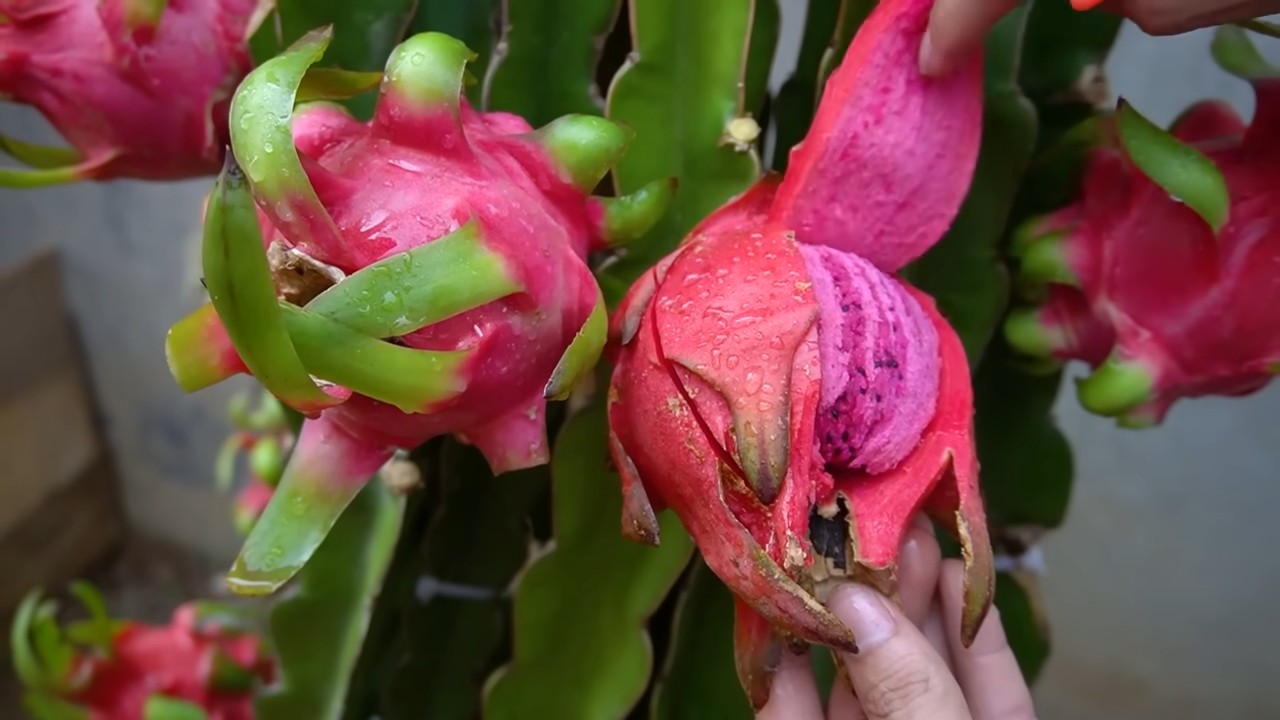
Growing Red Dragon Fruit at Home: A DIY Guide
Hey there, fellow plant enthusiasts! Ever dreamt of having your own exotic fruit garden? Well, let me tell you, growing Red Dragon Fruit (also known as Pitaya) at home is totally achievable, and it’s incredibly rewarding. I’ve been doing it for a few years now, and I’m excited to share my secrets with you. It might seem intimidating at first, but trust me, with a little patience and the right guidance, you’ll be enjoying your own homegrown dragon fruit in no time!
What You’ll Need:
Before we dive in, let’s gather all the necessary supplies. This will make the whole process smoother and more enjoyable.
* Dragon Fruit Cutting or Seedling: You can either start from a cutting (which is faster) or from seeds (which takes longer but is super satisfying). I recommend a cutting for beginners. You can usually find these at local nurseries or online.
* Well-Draining Potting Mix: Dragon fruit hates soggy soil! A mix specifically designed for cacti and succulents is ideal. You can also make your own by combining potting soil, perlite, and coarse sand.
* Large Pot (at least 20 gallons): Dragon fruit plants need room to grow, especially their root system. A large pot is essential for their long-term health.
* Support Structure: These plants are climbing cacti, so they need something to climb on. A sturdy trellis, a strong post, or even an old ladder will work.
* Gardening Gloves: Protect your hands from thorns and potential irritants.
* Pruning Shears: For trimming and shaping your plant.
* Slow-Release Fertilizer: To provide your dragon fruit with the nutrients it needs to thrive.
* Watering Can or Hose: For watering your plant.
* Optional: Rooting Hormone (for cuttings): This can help speed up the rooting process.
Starting from a Cutting: The Quick Route to Dragon Fruit
This is my preferred method because it’s faster and more reliable. You’ll get fruit much sooner than starting from seed.
1. Prepare the Cutting: If you bought a cutting, inspect it for any signs of damage or disease. Let the cut end callous over for about a week in a dry, shaded area. This helps prevent rot.
2. Apply Rooting Hormone (Optional): Dip the cut end of the cutting in rooting hormone powder. This isn’t strictly necessary, but it can encourage faster root development.
3. Plant the Cutting: Fill your large pot with the well-draining potting mix. Make a hole in the center and carefully insert the cutting, burying about 2-3 inches of the stem.
4. Water Sparingly: Water the soil lightly, just enough to moisten it. Avoid overwatering, as this can lead to root rot.
5. Provide Support: Place the support structure in the pot next to the cutting. Gently tie the cutting to the support using soft twine or plant ties.
6. Find the Right Spot: Place the pot in a sunny location that receives at least 6-8 hours of direct sunlight per day. Dragon fruit loves the sun!
7. Watering and Care: Water the cutting sparingly, allowing the soil to dry out completely between waterings. Check the soil moisture by sticking your finger into the soil. If it feels dry, it’s time to water.
8. Patience is Key: It can take several weeks or even months for the cutting to root. Be patient and continue to provide proper care. You’ll know it’s rooted when you see new growth emerging.
Starting from Seeds: The Patient Gardener’s Path
Growing dragon fruit from seed is a longer process, but it’s a fun and rewarding experience. Plus, you get to see the whole life cycle of the plant!
1. Extract the Seeds: Cut open a ripe dragon fruit and scoop out the pulp. Place the pulp in a bowl and add some water. Gently rub the pulp to separate the seeds from the flesh.
2. Clean the Seeds: Rinse the seeds thoroughly under running water to remove any remaining pulp.
3. Dry the Seeds: Spread the seeds on a paper towel and let them dry completely for several days.
4. Prepare a Seed Starting Tray: Fill a seed starting tray with a seed starting mix or a well-draining potting mix.
5. Sow the Seeds: Sprinkle the seeds evenly over the surface of the soil. Gently press them into the soil, but don’t bury them too deep.
6. Water Gently: Water the seeds gently using a spray bottle or a watering can with a fine rose.
7. Create a Humid Environment: Cover the seed starting tray with a clear plastic lid or plastic wrap to create a humid environment. This will help the seeds germinate.
8. Provide Light: Place the seed starting tray in a warm, bright location, but avoid direct sunlight.
9. Germination: The seeds should germinate within 1-3 weeks. Once the seedlings emerge, remove the plastic lid or plastic wrap.
10. Transplant the Seedlings: Once the seedlings are large enough to handle (about 2-3 inches tall), carefully transplant them into individual small pots.
11. Gradually Acclimate: Gradually acclimate the seedlings to outdoor conditions by exposing them to increasing amounts of sunlight each day.
12. Repotting: Once the seedlings have outgrown their small pots, repot them into larger pots. Eventually, you’ll need to transplant them into the large pot with the support structure, just like with the cuttings.
Ongoing Care: Keeping Your Dragon Fruit Happy
Once your dragon fruit plant is established, it’s important to provide ongoing care to ensure its health and productivity.
* Watering: Dragon fruit plants are drought-tolerant, but they still need regular watering, especially during hot, dry weather. Water deeply when the soil is dry to the touch, but avoid overwatering.
* Fertilizing: Feed your dragon fruit plant with a slow-release fertilizer specifically formulated for cacti and succulents. Apply the fertilizer according to the package directions. I usually fertilize mine in the spring and again in the summer.
* Pruning: Prune your dragon fruit plant regularly to maintain its shape and encourage fruit production. Remove any dead, damaged, or crossing branches. You can also prune the plant to control its size and shape.
* Support: Make sure the support structure is strong enough to support the weight of the plant as it grows. You may need to add additional support as the plant gets larger.
* Pest and Disease Control: Dragon fruit plants are generally resistant to pests and diseases, but they can be susceptible to certain problems, such as scale, mealybugs, and fungal infections. Inspect your plant regularly for any signs of pests or diseases and take appropriate action if necessary. I use neem oil for most pest issues.
* Pollination: Dragon fruit flowers are nocturnal and are typically pollinated by bats and moths. If you live in an area where these pollinators are not common, you may need to hand-pollinate the flowers. Use a small paintbrush to transfer pollen from one flower to another.
* Winter Protection: Dragon fruit plants are not frost-tolerant, so you’ll need to protect them from freezing temperatures. If you live in an area with cold winters, you can bring your plant indoors or cover it with a frost blanket.
Harvesting Your Dragon Fruit: The Sweet Reward
After all your hard work, the moment you’ve been waiting for: harvesting your own dragon fruit!
* Ripeness: Dragon fruit is typically ready to harvest about 30-50 days after flowering. The fruit will turn a bright red or pink color and will be slightly soft to the touch.
* Harvesting: Use a sharp knife or pruning shears to cut the fruit from the plant. Be careful not to damage the plant.
* Enjoy! Once you’ve harvested your dragon fruit, you can enjoy it fresh, in smoothies, or in desserts. The flesh is sweet and slightly tangy, with a refreshing flavor.
Troubleshooting: Common Problems and Solutions
Even with the best care, you might encounter some challenges along the way. Here are a few common problems and how to address them:
* Yellowing Leaves: This could be a sign of overwatering, underwatering, or nutrient deficiency. Check the soil moisture and adjust your watering accordingly. Fertilize the plant if necessary.
* Root Rot: This is caused by overwatering and poor drainage. Make sure your potting mix is well-draining and avoid overwatering. If you suspect root rot, repot the plant in fresh soil.
* Lack of Flowering: This could be due to insufficient sunlight, lack of nutrients, or improper pruning. Make sure your plant is getting enough sunlight and fertilize it regularly. Prune the plant to encourage flowering.
*
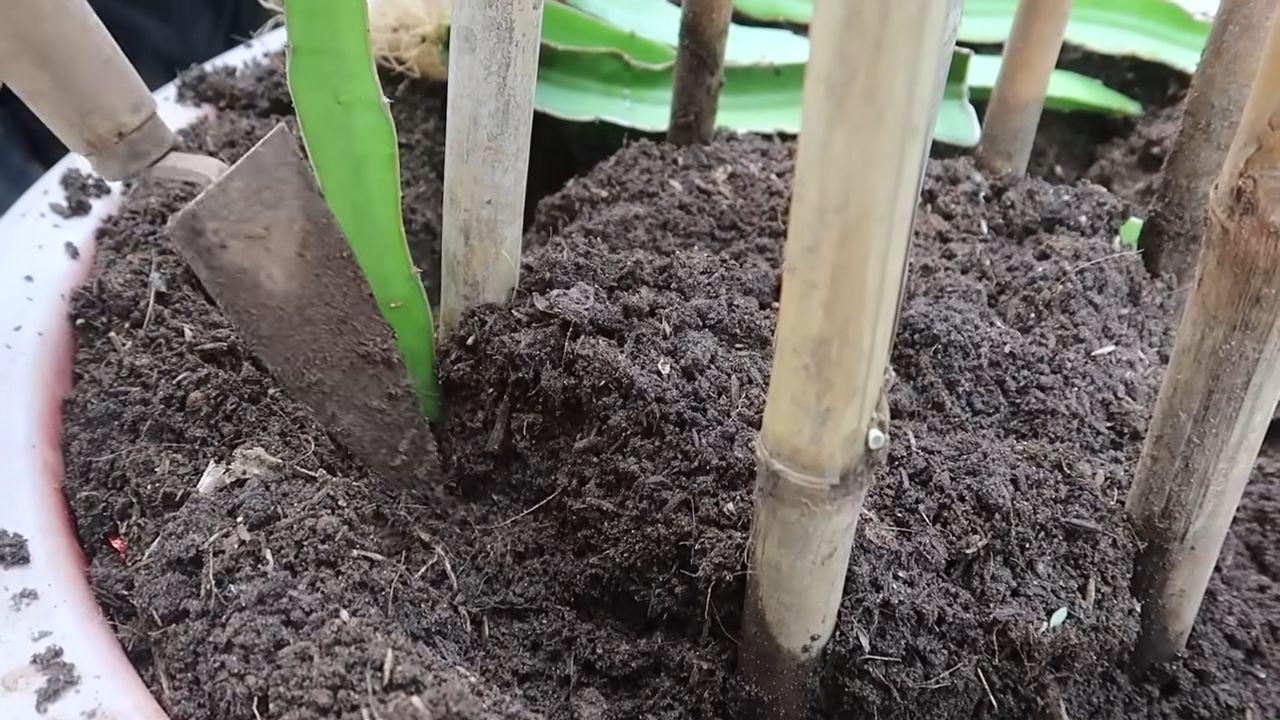
Conclusion
So, there you have it! Growing your own Red Dragon Fruit from seed might seem like a journey, but the rewards are undeniably worth the effort. Imagine biting into a vibrant, sweet, and slightly tangy fruit that you nurtured from a tiny seed. It’s a feeling of accomplishment and a taste of pure, homegrown goodness that you simply can’t replicate with store-bought varieties.
This DIY trick isn’t just about saving money; it’s about connecting with nature, understanding the life cycle of a plant, and experiencing the joy of cultivating your own food. Plus, you’ll have the satisfaction of knowing exactly what went into growing your Red Dragon Fruit, free from any unwanted chemicals or pesticides.
Why is this a must-try? Because it empowers you to take control of your food source, provides a sustainable and eco-friendly way to enjoy this exotic fruit, and offers a unique and rewarding gardening experience.
Don’t be afraid to experiment with variations! Try different soil mixes to see what works best in your climate. Consider using a trellis system to support your growing dragon fruit plant as it matures. You can even try grafting different varieties onto your seedling to create a unique hybrid. For example, you can graft a white flesh dragon fruit to your red dragon fruit to create a plant that can produce both.
And remember, patience is key. Growing Red Dragon Fruit from seed takes time, but the journey is just as rewarding as the destination. Embrace the process, learn from your mistakes, and celebrate your successes along the way.
We wholeheartedly encourage you to try this DIY trick and embark on your own Red Dragon Fruit growing adventure. Once you’ve tasted the fruits (pun intended!) of your labor, we’re confident you’ll be hooked.
Don’t forget to share your experiences with us! We’d love to hear about your successes, challenges, and any tips or tricks you discover along the way. Post pictures of your seedlings, share your growing techniques, and let’s create a community of Red Dragon Fruit enthusiasts! Your insights could inspire others to take the plunge and experience the joy of growing their own delicious and nutritious fruit. Let us know if you have successfully grown your own Red Dragon Fruit.
Frequently Asked Questions (FAQ)
How long does it take to grow Red Dragon Fruit from seed?
Growing Red Dragon Fruit from seed is a patience-testing endeavor. Generally, it takes anywhere from 6 months to a year for the seedlings to become established and reach a size suitable for transplanting into a larger pot or the ground. After transplanting, it can take another 1-3 years for the plant to mature and produce fruit. The exact timeframe depends on various factors, including climate, soil conditions, and the specific variety of Red Dragon Fruit. Remember that consistent care and optimal growing conditions will significantly impact the speed of growth and fruit production.
What is the best soil for growing Red Dragon Fruit?
Red Dragon Fruit thrives in well-draining soil that is rich in organic matter. A slightly acidic to neutral pH (around 6.0-7.0) is ideal. A good soil mix can be created by combining equal parts of potting soil, compost, and perlite or sand. The perlite or sand helps to improve drainage, preventing the roots from becoming waterlogged. You can also add a slow-release fertilizer to the soil mix to provide essential nutrients for healthy growth. Avoid heavy clay soils, as they tend to retain too much water and can lead to root rot.
How much sunlight does Red Dragon Fruit need?
Red Dragon Fruit requires plenty of sunlight to thrive and produce fruit. Aim for at least 6-8 hours of direct sunlight per day. In hotter climates, providing some afternoon shade can help prevent sunburn on the stems and fruit. If you are growing your Red Dragon Fruit indoors, place it near a sunny window or supplement with grow lights to ensure it receives adequate light. Insufficient sunlight can result in stunted growth, poor fruit production, and a lack of vibrant color in the fruit.
How often should I water my Red Dragon Fruit plant?
Watering frequency depends on the climate, soil type, and the size of the plant. Generally, water deeply when the top inch of soil feels dry to the touch. Avoid overwatering, as this can lead to root rot. During the growing season (spring and summer), you may need to water more frequently than during the dormant season (fall and winter). Ensure that the pot or planting area has good drainage to prevent water from accumulating around the roots. A good rule of thumb is to water thoroughly but infrequently, allowing the soil to dry out slightly between waterings.
What kind of support does Red Dragon Fruit need?
Red Dragon Fruit is a climbing cactus, so it requires a sturdy support structure to grow properly. A trellis, fence, or post can be used to support the plant as it grows. The support should be strong enough to withstand the weight of the mature plant and its fruit. As the plant grows, tie the stems to the support using soft twine or plant ties. Regular pruning can help to maintain the shape of the plant and encourage branching, which will increase fruit production.
Are there any pests or diseases that affect Red Dragon Fruit?
While Red Dragon Fruit is relatively pest and disease-resistant, it can be susceptible to certain problems. Common pests include aphids, mealybugs, and scale insects. These pests can be controlled with insecticidal soap or neem oil. Fungal diseases, such as stem rot and root rot, can occur in humid conditions or if the plant is overwatered. Proper drainage and good air circulation can help to prevent these diseases. Regularly inspect your plant for any signs of pests or diseases and take action promptly to prevent them from spreading.
Can I grow Red Dragon Fruit in a pot?
Yes, Red Dragon Fruit can be successfully grown in a pot, especially if you live in a climate with cold winters. Choose a large pot (at least 20 gallons) with good drainage holes. Use a well-draining potting mix and provide a sturdy trellis or support structure for the plant to climb. Potted Red Dragon Fruit plants may require more frequent watering and fertilization than those grown in the ground. During the winter, move the pot indoors to protect the plant from frost.
How do I pollinate Red Dragon Fruit?
Most Red Dragon Fruit varieties are self-pollinating, meaning they can produce fruit without the need for cross-pollination. However, cross-pollination can often result in larger and more flavorful fruit. If you want to encourage cross-pollination, you can hand-pollinate the flowers using a small brush to transfer pollen from one flower to another. Red Dragon Fruit flowers typically bloom at night, so you will need to hand-pollinate them in the evening or early morning.
When is the best time to harvest Red Dragon Fruit?
Red Dragon Fruit is typically ready to harvest about 30-50 days after flowering. The fruit is ripe when the skin turns a bright, even color (usually red or pink, depending on the variety) and the “wings” or scales on the fruit start to dry out and turn brown. The fruit should also feel slightly soft to the touch. To harvest, simply twist the fruit off the stem.
How do I store Red Dragon Fruit?
Freshly harvested Red Dragon Fruit can be stored in the refrigerator for up to two weeks. To prolong its shelf life, wrap the fruit in plastic wrap or store it in an airtight container. You can also freeze Red Dragon Fruit for longer storage. To freeze, peel and cut the fruit into cubes or slices and place them in a freezer-safe bag or container. Frozen Red Dragon Fruit can be used in smoothies, desserts, or as a refreshing snack.

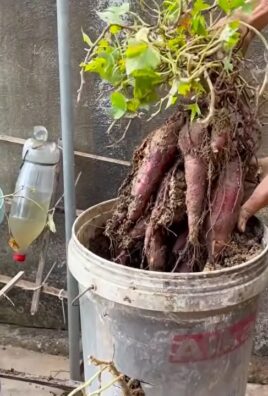
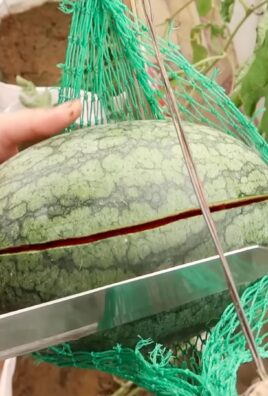
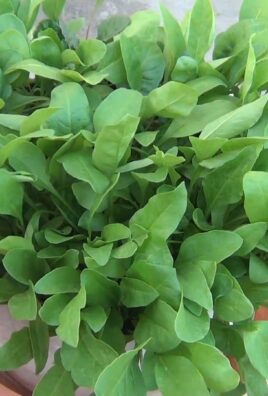
Leave a Comment